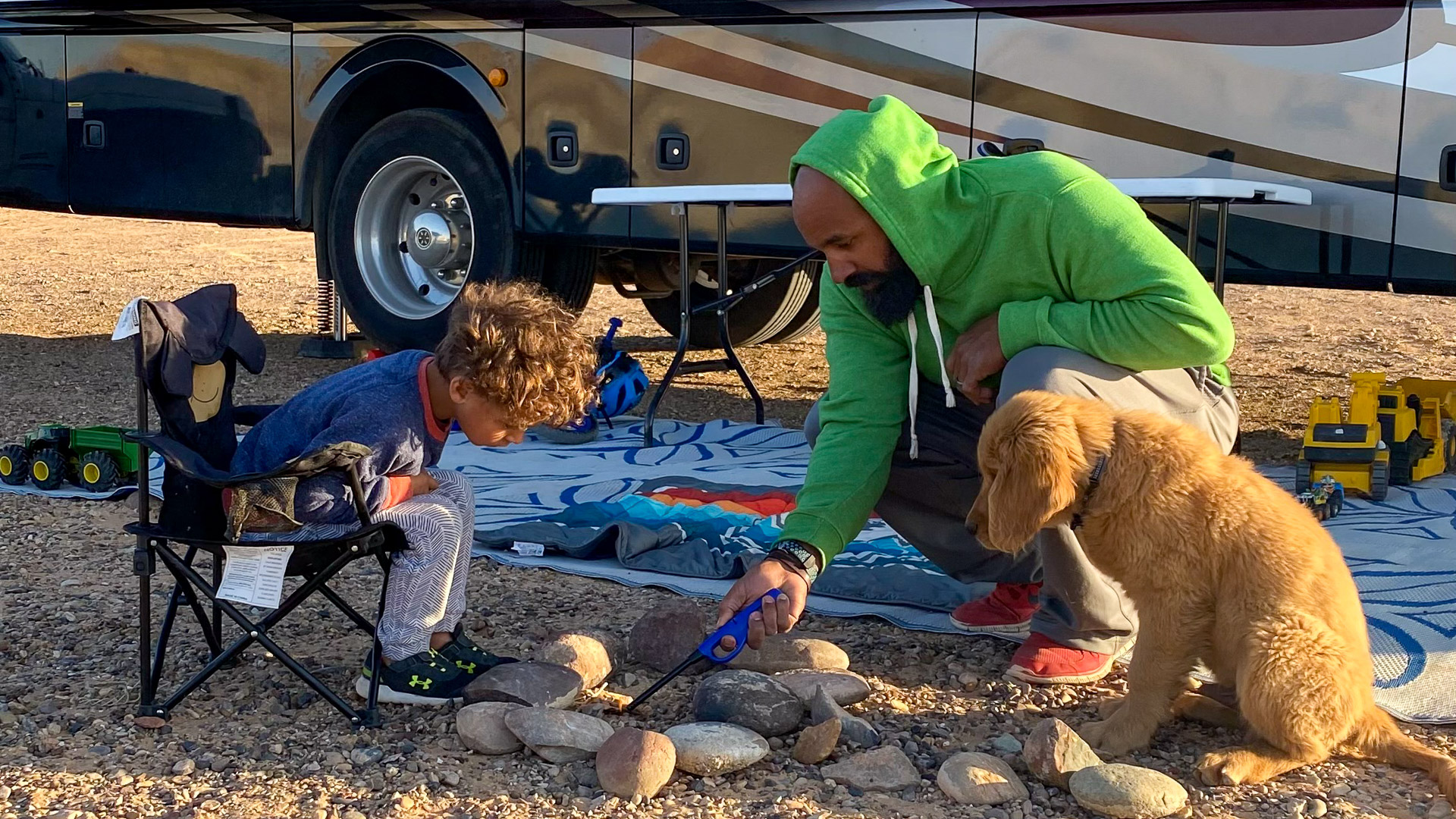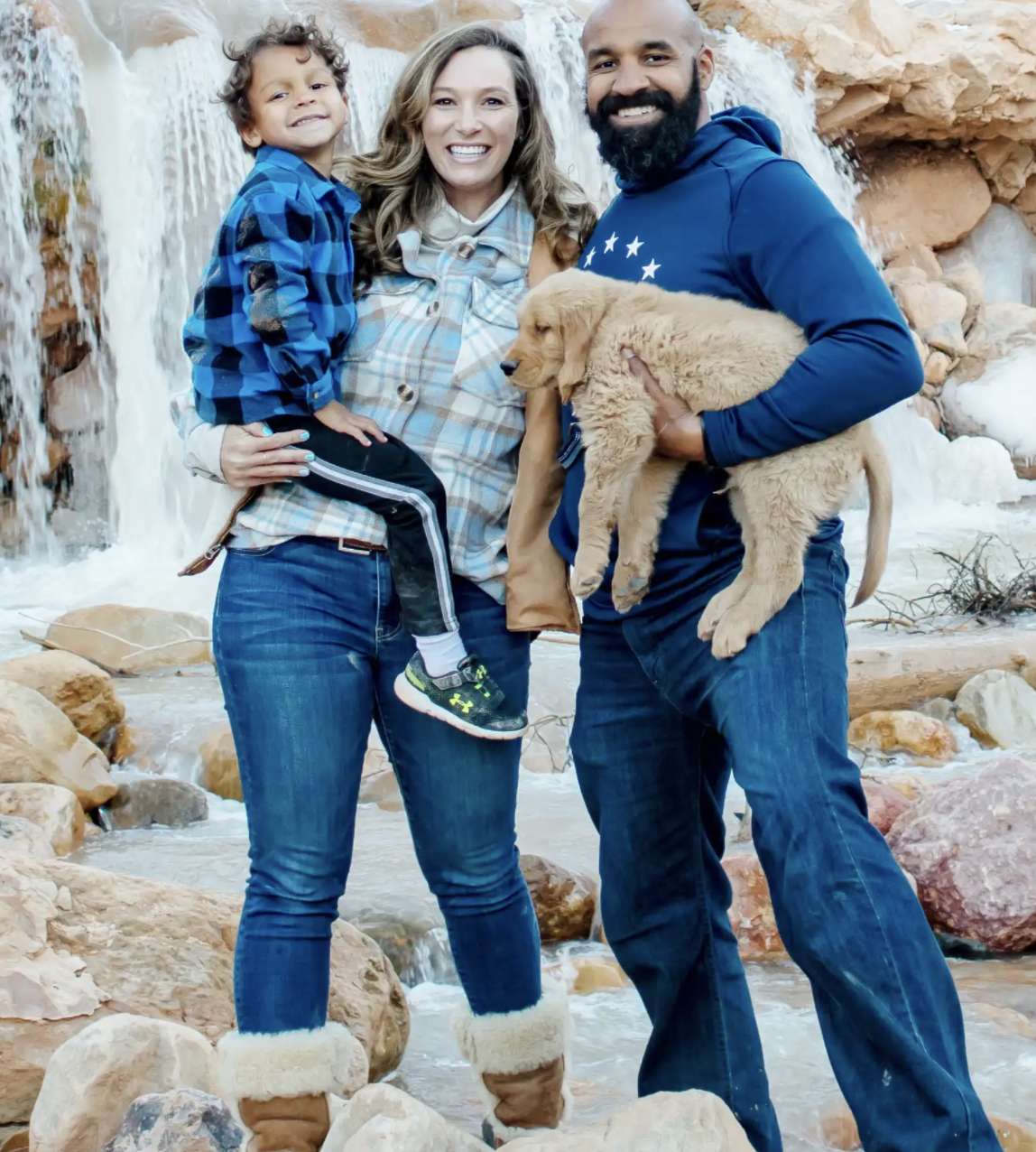
With the explosion of interest in RVing over the last 18 months, many people are experiencing an RV for the first time. Some are making it their primary home and hitting the road full time like we have, while others plan to use it for weekend trips and vacations. Regardless of how you will be using your RV, if it is entirely new to you, the amount of stuff to get and things to know can be a bit overwhelming at times. So, we have compiled a list of essentials to make those first few trips a little less daunting. We had never owned an RV prior to buying the one we now live in, so we know what those first-time jitters are like. But, if you have the following items on board for your maiden voyage, you should be good to go!

Get Hooked Up
Unless you plan on primarily boondocking (also known as dry camping), you’ll probably be staying at RV parks where you can hook up to utilities. These hookups will supply your RV with electricity, water and the ability to empty your wastewater tanks. We bought our RV from a private seller, so it already had some of the things necessary to get all hooked up. If you buy your RV new, it may come with the very basics. But here are the things you will need to have with you in order to get hooked up.
To plug into the campground electricity, you’ll need a power cord. Depending on the kind of rig you have, this cord may be hardwired to the RV or it could be a separate cord that needs to be plugged in at both ends. Take note of your RV’s amp rating to ensure you have the correct size and plug. Most will use either 30- or 50-amp service.
Once you have the cord, you will also need to have adapters that allow you to plug in even if the campground electric is not the same as what your RV uses. For example, if your RV is 50-amp and you are going to a campground that only offers 30-amp service, you’ll need to have the adapter that allows you to plug your rig into the 30-amp outlet. While you’re at it, pick up the adapter for a 30-amp down to a standard 20-amp plug, as well. It could mean the difference between being able to keep your fridge powered and having to buy a bunch of ice for the cooler.

Last but certainly not least, a surge protector is a must. You can’t always trust the campground electrical systems for stability, so this is an essential item for protecting the electrical system in your rig. They can be pricey, but not nearly as expensive as replacing all the electrical components in your new RV. They can also let you know if the electricity you are getting is “clean” and not overworking your appliances. Be sure to grab a bike lock, as well, to lock your surge protector to the electrical pedestal. It will keep any passing sticky fingers from walking off with it.

Now let’s get your water hooked up. You’ll need one hose that you use only for hooking up the water to your RV, and a second hose only used for black tank flushing is good to have, as well. Make sure these hoses are clearly marked and never mixed up. A third hose is useful if you want to rinse off muddy kids or dogs before letting them back inside. A brass Y fitting is a great way to hook your water hose to the campground water source as it allows you to hook a second hose up without having to disconnect your RV hose. Lastly, you’ll need a water pressure regulator. Some campgrounds have water pressure as high as 120 psi. Unregulated, that kind of pressure could rupture fittings and water lines inside your RV, which you definitely do not want. Install it on the source end of your hose and you’ll be good to go. An inline water filter is also a good idea, as you never know how good the water will be where you camp.


Lastly, draining your wastewater tanks is an essential part of RVing. You will need a good-quality sewer drain hose to be able to dump your gray and black water tanks. Do not skimp here. Spills can and will happen, but you do not want this hose to ever fall apart, least of all while you are draining the tanks. Speaking of spills, get a good pair of thick rubber gloves to wear any time you’re handling the sewer hose and related parts. In addition to your main hose, it’s not a bad idea to have a secondary extension hose in case the dump connection is oddly far from your rig. A sidewinder sewer hose support will ensure your hose flows downhill to the dump pipe while keeping it supported and off the ground. You’ll also want a 4-in-1 adapter/coupler to make the connection between your sewer hose and the campground pipe sealed and secure. A bin to keep these things in is not necessary, but it’s a good idea. It will help contain odors during travel while keeping these pieces together and away from other things.


Stay In Place And Keep It Level
Getting, and keeping, your RV level is essential to enjoying your camping trip. Sleeping in a level bed goes without saying, but some appliances must be level to operate properly and efficiently. Depending on what kind of RV you have, you may need all, or just a few, of the following items to keep everything level and stationary once you get to your campsite.

Speaking of campsites, you will come across everything from dead-flat concrete pads to dirt sites that lean in every direction. You should hope for the former but be prepared for the latter. If you’re in a towable RV (pop-up, travel trailer or fifth-wheel), you’ll want to have plenty of leveler blocks. The popular kind are plastic plates that you can stack to the desired height or in the form of ramps. You can roll your wheels up onto them or put them under your leveling jacks if you need extra height. Wheel chocks will also be essential for you to keep your trailer in place once you get it parked. There are several different kinds, from the basic chock to ones that allow you to adjust side-to-side level. If you are in a motor home, you’ll want to add a set of ramps to the above items. Being able to drive up on ramps at an unlevel site is a great start toward getting your rig level.

Keep It Together
If you have an RV, you also need to have some basic tools on board to handle the occasional fixes you’ll need to take care of. As they roll down the road, RVs are bouncing and bobbing, and things can come loose along the way. Being able to repair these kinds of things will go a long way toward keeping your rig in tip-top shape! The following is a list of tools I recommend having with you. Best case, you’ll buy a set of these tools and leave them in the RV. That way you won’t forget to pack them on your next trip.
Power Tools: Make sure you have a drill (with both drill bits and driver bits), impact wrench (especially if you have manual scissor jacks on your trailer), Dremel tool with assorted bits and a small air compressor, if you have space.
Hand Tools: Outfit yourself with a good pair of work gloves, screwdrivers of various sizes and heads (including a square tip), an adjustable wrench and crescent wrenches of various sizes, pliers, channel lock pliers, vice grips, snips, a small pry bar, a hammer, a multimeter, a flashlight, a headlamp, Allen wrenches (metric and imperial) and a good socket set. Of course, you’ll want a roll of duct tape or two and various glues, as well. These are the basics, but the more, the merrier!

I also recommend having a bottle jack, a tire repair kit, a tire pressure gauge, a four-way lug wrench and some roadside emergency reflectors on board.

Fire It Up
What’s a camping trip without a campfire? Make sure to bring along the essentials to get a fire going. Most campgrounds will sell firewood, but it’s most likely cheaper to bring your own. Check with local regulations as some areas don’t allow you to bring your own due to disease and pests. I keep a small hatchet and 3-pound maul on hand to split bigger logs. And don’t forget the newspaper, or fire-starter blocks, and a lighter. Whether it’s for cooking or just hanging out, a good campfire is always the center of the action.
While we’re talking about fire, a small camp grill is a great thing to have on board if you have the space. Cooking outside is great for so many reasons, but it is essential when camping in the summer and trying to keep the heat outside of the RV. Keep the stove and oven off on the inside and do the cooking outside on the grill or campfire!
The absolute most important thing to bring on any RV camping trip is your sense of adventure! RVing can open your eyes to new experiences and levels of enjoyment you’ve never experienced before. Getting outside and closer to nature with your family is where you will find endless smiles and forever memories.





